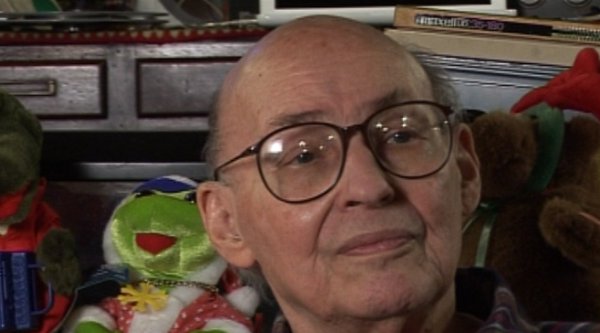NEXT STORY

Freeman Dyson proves what I couldn't
RELATED STORIES

NEXT STORY

Freeman Dyson proves what I couldn't
RELATED STORIES


|
Views | Duration | |
|---|---|---|---|
| 61. Developing programs that could understand written questions | 2219 | 02:22 | |
| 62. AI programs 'devolving' from calculus to geometry | 2346 | 03:11 | |
| 63. Why can't machines do things that babies can? | 2288 | 03:39 | |
| 64. Facial recognition machines | 2017 | 01:13 | |
| 65. How computers developed at MIT | 2652 | 02:55 | |
| 66. The conflict between AI research and computer science | 2622 | 01:58 | |
| 67. What I think is wrong with modern research | 2750 | 02:32 | |
| 68. Lowell Wood's novel idea for launching a space station | 2478 | 03:37 | |
| 69. The importance of my undergraduate classes at Harvard | 2614 | 01:26 | |
| 70. My undergraduate thesis in fixed point theorems | 3615 | 04:26 |


So then in my senior year… I was… I was majoring in physics mostly and with fairly poor grades because I was doing so many other things… and I thought I would make up for this by doing a good thesis, but it turned out at Harvard, physics students can’t… they don’t have an undergraduate thesis, but they do in math. So, I asked Andy Gleason why can’t I just switch to math and do a thesis and he said: 'No problem,' signed something and I decided to do a thesis on fixed point theorems which was a beautiful little fragment of mathematics that… that I was very interested in. And there was a theorem that… Kakutani was a professor at Yale and here’s an example of a fixed point theorem: Of… consider that at each point in the world on… on the earth, there’s a temperature and there’s a humidity, and these vary continuously over… over continuous functions. So there’s two continuous functions on this sphere. Kakutani… somebody else had proved that… I forget who… Whitney, Professor Whitney, was a friend of mine at Harvard actually, had proved that you can find two points on the earth which are exactly opposite points which have the same temperature and the same humidity. This is rather surprising.
So that… that was a famous fixed point theorem. Or you could say there's, if you consider mountains… There’s two points which have the same altitude and the same temperature, any two functions. It’s very strange, why should that be? Anyway, Kakutani had proved that if you take a… you can find a triangle, an equilateral triangle, that is… 60º angles, the same thing is true, for an equilateral triangle you can find three points which will have the same temperature and pressure… or temperature and humidity. So that was Kakutani’s fixed point theorem. He was a professor at Yale – I’d never met him actually – so that’s very interesting because it shows that somehow if you have an extra point you can… you can do a little more because now they’re equal at three points. Isn’t that funny?
And so then I said: 'Well, what about other... why does it have to be an equilateral triangle?' And so I worked on that a lot and I managed to prove that if it were a right triangle, it was also true and also if it were a triangle which were three points of a regular pentagon, that would be… the same thing would be true. And that’s as far as I got, I couldn’t prove it for any old triangle. But, anyway, my proof of the thing for the pentagon impressed Gleason and that was probably why he told Princeton they had to admit me as a graduate student. That’s the next step for a mathematician.
So it was a great adventure and… but it always haunted me that I couldn’t show this thing for any old triangle.
Marvin Minsky (1927-2016) was one of the pioneers of the field of Artificial Intelligence, founding the MIT AI lab in 1970. He also made many contributions to the fields of mathematics, cognitive psychology, robotics, optics and computational linguistics. Since the 1950s, he had been attempting to define and explain human cognition, the ideas of which can be found in his two books, The Emotion Machine and The Society of Mind. His many inventions include the first confocal scanning microscope, the first neural network simulator (SNARC) and the first LOGO 'turtle'.
Title: My undergraduate thesis in fixed point theorems
Listeners: Christopher Sykes
Christopher Sykes is a London-based television producer and director who has made a number of documentary films for BBC TV, Channel 4 and PBS.
Tags: Harvard University, Yale University, Princeton University, Andrew Gleason, Shizuo Kakutani, Hassler Whitney
Duration: 4 minutes, 27 seconds
Date story recorded: 29-31 Jan 2011
Date story went live: 12 May 2011